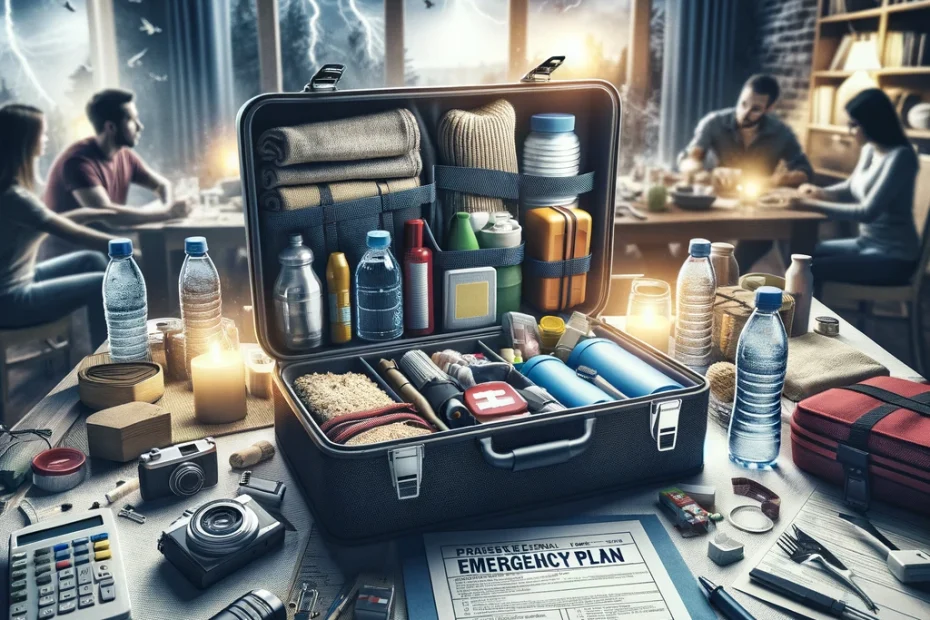Introduction
In an ever-changing world where natural disasters seem to be growing more frequent and intense, being prepared has never been more crucial. Emergency preparedness is not just about having a plan; it’s about equipping yourself with the knowledge and tools to face whatever comes your way confidently. From hurricanes to earthquakes, wildfires to floods, knowing how to plan for natural disasters can mean the difference between panic and peace of mind. This comprehensive guide offers insights and strategies to help you and your loved ones stay safe before, during, and after a natural disaster.
Emergency Preparedness
Understanding the basics of emergency preparedness is the first step in creating a resilient safety net. It involves assessing potential risks, making plans, building an emergency kit, and staying informed. Each of these components plays a crucial role in ensuring that you can navigate the uncertainties of natural disasters with confidence.
Assessing Potential Risks
Begin by identifying the types of natural disasters most likely to occur in your area. This understanding will help tailor your emergency plan and kit to the specific challenges you might face. Whether it’s the threat of earthquakes, hurricanes, or floods, recognizing the risks is pivotal in crafting an effective preparedness strategy.
Creating an Emergency Plan
An emergency plan is your roadmap during a disaster. It should include evacuation routes, family communication strategies, and a plan for pets. Detailing these elements ensures that everyone knows what to do when disaster strikes, reducing chaos and confusion.
Building an Emergency Kit
An emergency kit is a collection of basic items your household may need in the event of an emergency. From food and water to first aid supplies and flashlights, this kit should help you survive for several days after a disaster.
Staying Informed
Staying informed about potential threats and ongoing disasters is crucial. Today’s technology offers multiple ways to receive timely updates, including emergency apps, NOAA weather radios, and local news outlets. Knowledge is power, especially when it comes to natural disaster preparedness.
Planning for Specific Disasters
Hurricanes
Living in a hurricane-prone area requires specific preparations. From securing your home to understanding evacuation orders, knowing how to prepare for a hurricane can significantly reduce the risk of damage and injury.
Earthquakes
Earthquakes strike without warning, making preparedness essential. Securing heavy furniture and knowing safe spots in your home can help protect you and your family during an earthquake.
Wildfires
Wildfires are unpredictable and devastating. Creating defensible space around your home and having evacuation plans can enhance your safety in the face of a wildfire.
Floods
Floods can develop slowly or quickly, but being prepared can help mitigate their impact. Knowing your flood risk and having a plan for moving to higher ground are key components of flood preparedness.
Emergency Preparedness for Families
Families with children have unique needs during emergencies. Involving kids in the planning process and having a family emergency plan can help ensure everyone’s safety.
Emergency Preparedness for Pets
Pets are part of the family, and their needs should be considered in your emergency plans. From evacuation plans to emergency kits, ensuring the safety of your pets is a critical aspect of preparedness.
Community Involvement
Community involvement can enhance your preparedness efforts. Participating in local disaster preparedness programs and working with neighbors can build a supportive network that stands strong during disasters.
Emergency Preparedness Training
Training and drills can prepare you and your family for the realities of a disaster. From CPR classes to emergency drills, being prepared means practicing what to do before disaster strikes.
Recovering After a Natural Disaster
Recovery is the process of getting your life back to normal after a disaster. It includes repairing damage, coping with trauma, and rebuilding community ties. Understanding the recovery process can help you navigate the difficult days and weeks after a disaster.
Conclusion
Emergency preparedness for natural disasters is an ongoing process that requires attention and effort. By understanding the risks, making a plan, building an emergency kit, and staying informed, you can face natural disasters with confidence. Remember, preparation today can make a significant difference tomorrow, ensuring the safety and well-being of you and your loved ones.
